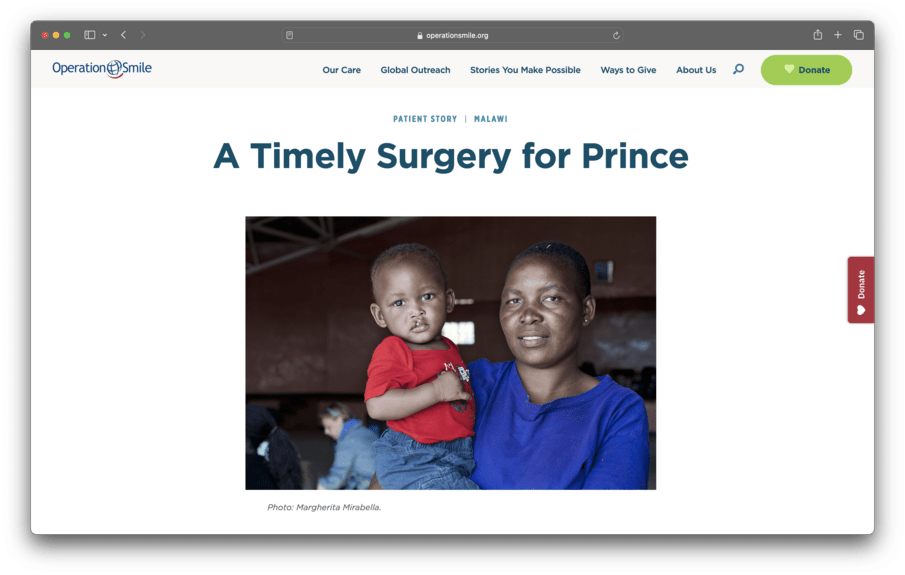Your team has diligently written web content and blog posts for years. Years, quite literally. You know more than anyone that the need to develop new content to engage your supporters and attract new ones doesn’t stop. You must constantly find new and creative ways to frame the important work your nonprofit is doing. It’s rewarding, but it is also an unrelenting task.
This has undoubtedly been true for Capellic client Operation Smile. Their blog, in particular, focuses on uplifting stories about the obstacles children and their families face when a child has a cleft lip and limited access to safe surgery centers, and how they’ve overcome them. Readers are brought deeply into the lives of people all over the world – allowing them to see the tangible and transformative impact of Operation Smile’s work providing cleft palate surgeries to those in need. These stories create powerful and meaningful connections between Operation Smile and their supporters.
Even with so much great content, it does need review. Early in 2018, Operation Smile’s Digital Director Aimee Berniard reached out to me about their plan to audit their content. We suggested putting a few simple ROT analysis tools in place to make their work a bit more efficient.
ROT, of course, is nothing bad or stinky. It stands for Redundant, Outdated, and Trivial. You see, it’s the content that, uh, “rots” your website if left unchecked. We came across this approach to content analysis while working on a redesign project a few years before, but hadn’t used it on a site that was in normal operations.
It’s super simple to implement. Content editors get a few buttons (via the Flag module for you Drupalers out there) for each ROT element, and two specialized content views to return to later to do something with the flagged content. Maybe 3-4 hours max for us to put in place. Operation Smile then went to work.

How did it go? The tools made the process easier, but the big story was what they didn’t expect. Buried in all of these blog posts they found some exceptional gems that – with some work – are just as relevant and powerful today as they were when first written. They had never updated content in this way before, so they decided to give it a shot, which resulted in a another epiphany – updating and republishing older stories was significantly more cost effective than always creating brand new stories. We were shocked when Berniard told us, “The time to rewrite a ROT piece is easily 80% less than writing a new post. This also translates into an increased frequency of “fresh” content for our blog. All around a win!”
Furthermore, according to Berniard the response to the stories they re-released has been fantastic, both in terms of supporter engagement and internal feedback. As such, they now update key posts as a regular part of this ongoing process of content review. If you’re interested, you can see one of the stories here.
So on your next story, try going back in time. You may find that you too have some gems back there just waiting to be rediscovered.